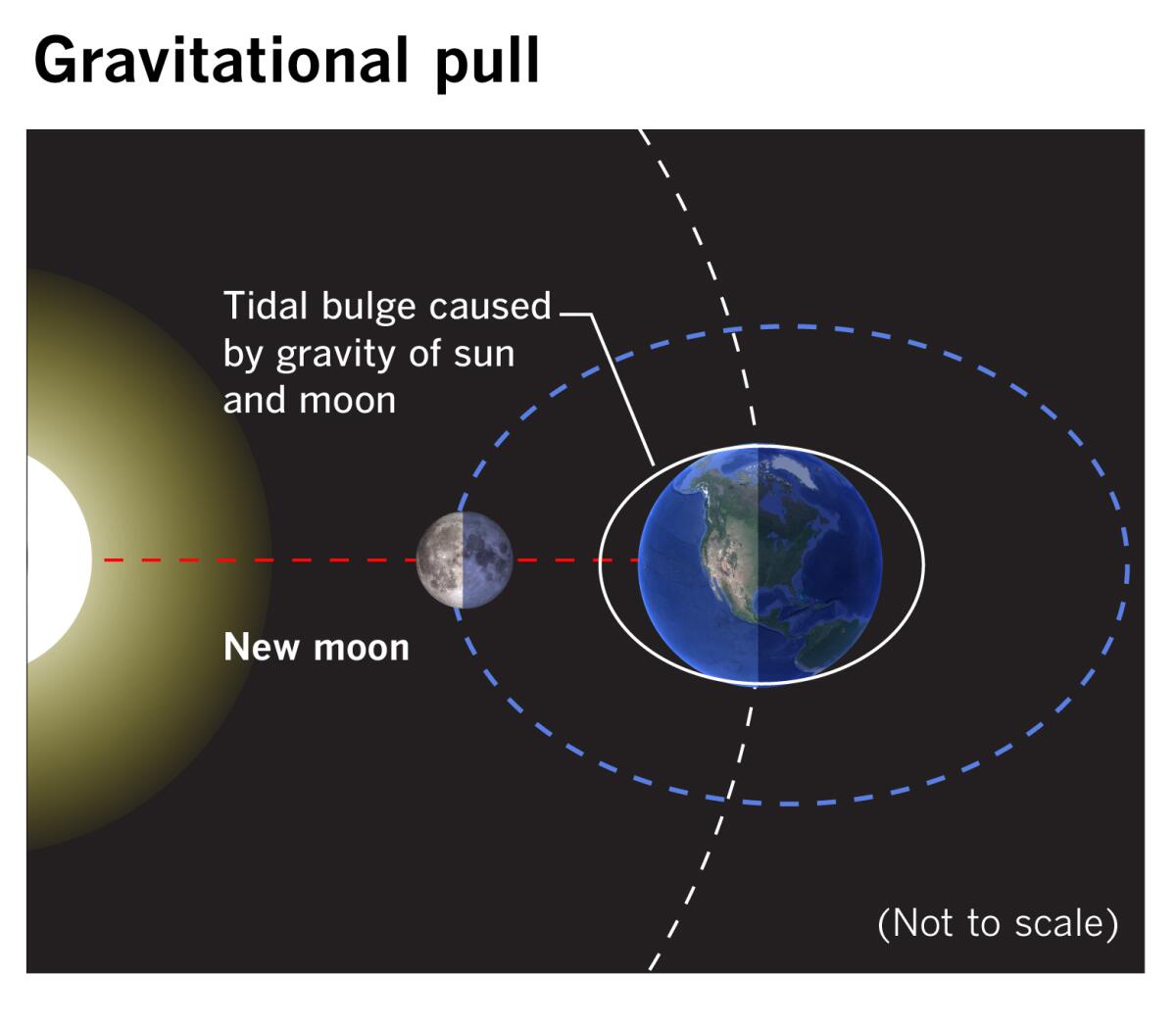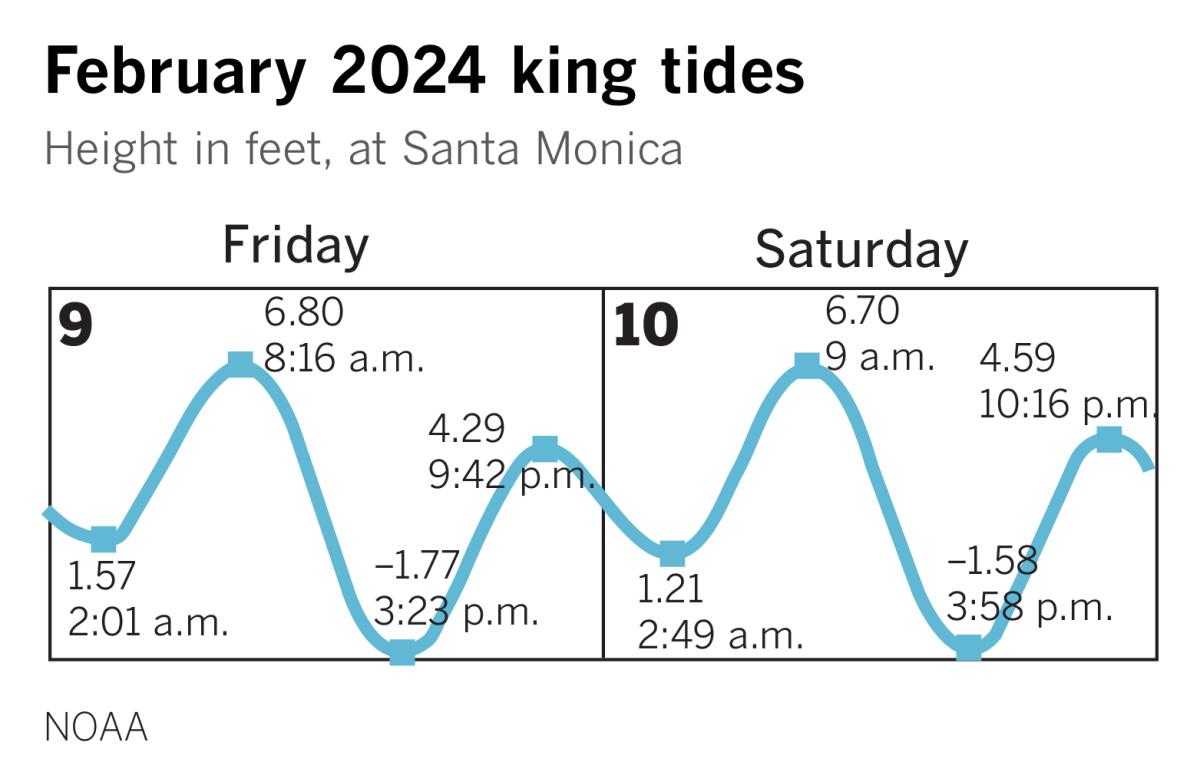King tides are the highest tides of the year, but scientists give them a different name: perigee spring tides. The name does not refer to the season of the year. – along the California coast, the most dramatic tides often occur in the winter – but until the “rising” of the tide during the new moon and full moon.
Tides are caused by the gravitational pull of the moon and sun on the world's oceans. During full or new moons, the Earth, Moon, and Sun are nearly aligned, coming together to make the oceans bulge a little more.
The Earth, Sun, and Moon align twice each lunar month, which averages about 29.5 days.
(Paul Duginski / Los Angeles Times)
When they are aligned, the sun's gravity adds to that of the moon. The Sun is much larger than the Moon, but its gravitational pull is only half that of the Moon because it is so much further away. The combined pull of the sun and moon on the oceans creates spring tides: higher than average high tides and lower than average low tides.
But the Moon's orbit around the Earth is not a perfect circle. It is slightly elliptical. So, once every 28 days, the Moon passes by a point where it is closest to the Earth. In that position, known as perigee, the Moon exerts its strongest gravitational pull and the difference between high and low tides is greatest.
When the new or full moon coincides with or is near perigee, usually six to eight times a year, the result is a perigee spring tide, or what is popularly called a king tide.

A highly exaggerated schematic representation of the effects of gravity on the oceans.
(Paul Duginski / Los Angeles Times)
In California, most of the attention is focused on king tides associated with new moons during the winter due to the risk of coastal flooding. Floods are often minor “nuisance floods” in low-lying areas, but they can be more severe.

(Paul Duginski / Los Angeles Times)
King tides can give us an idea of what sea level rise will be like. A king tide is typically 1 to 2 feet higher than the average high tide, but this can be exaggerated when combined with the almost inevitable winter storms and the large waves that accompany them along the California coast. In the coming decades, sea level rise due to climate change is expected to cause average high tides that may be as high as today's king tides. In the coming decades, king tides are expected to be 1 to 2 feet higher than that, and they will also combine with the effects of winter storms, pushing high tides even higher.
Southern California saw stormy seas combined with king tides on January 11 and 12, causing flooding in low-lying coastal areas. New moons at perigee will occur again on February 9, March 10, and April 8. The new moon will be the closest to Earth on March 10, and Southern California will be able to see a partial solar eclipse on April 8 when the new moon passes. between the sun and the Earth.

(Paul Duginski / Los Angeles Times)
Coastal flooding can also occur with king tides during the summer and fall. There will be four full moons near perigee in 2024: August 19, September 18, October 17, and November 15. The Hunter's Moon on October 17 will be the closest to Earth, causing a high tide. of 6.82 feet at 9:57 am in Santa Monica, according to tide tables produced by NOAA.
The California King Tides Project is a partnership of government and community organizations that photographs these high tides and helps people visualize sea level rise by observing the effects of higher tides on the coast, beaches, access to California's beaches, infrastructure, habitat and estuaries today.











